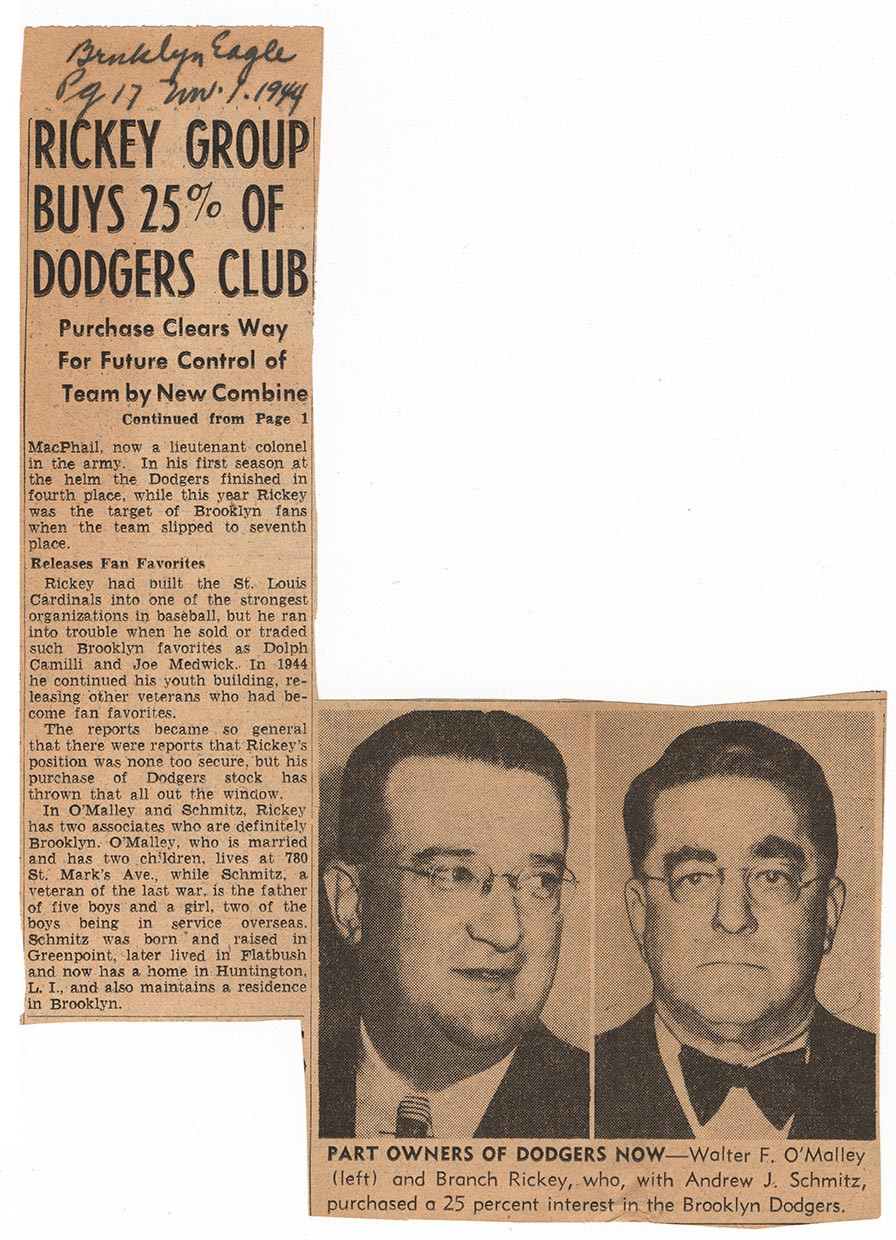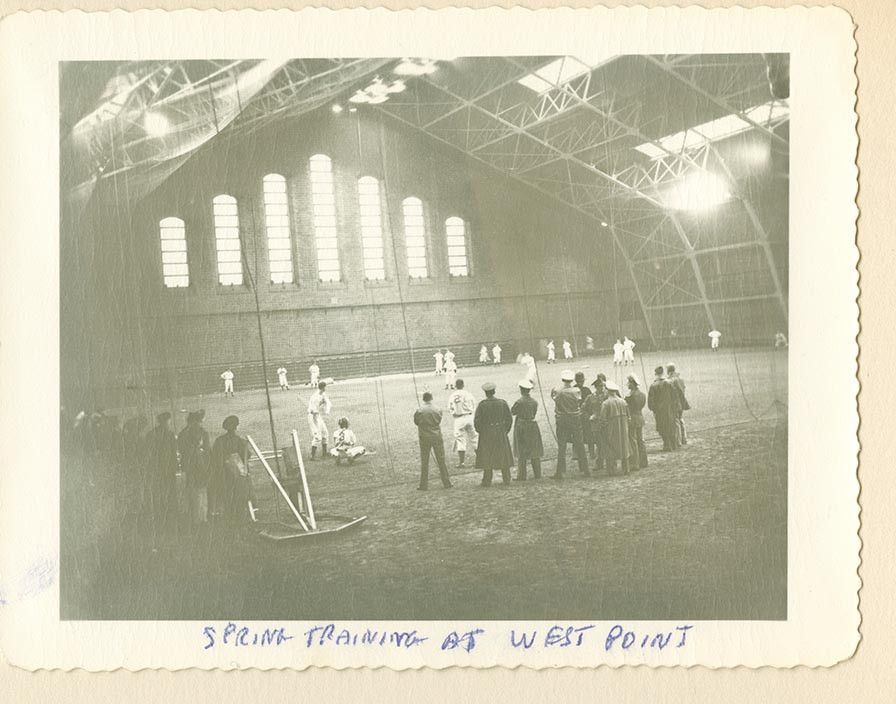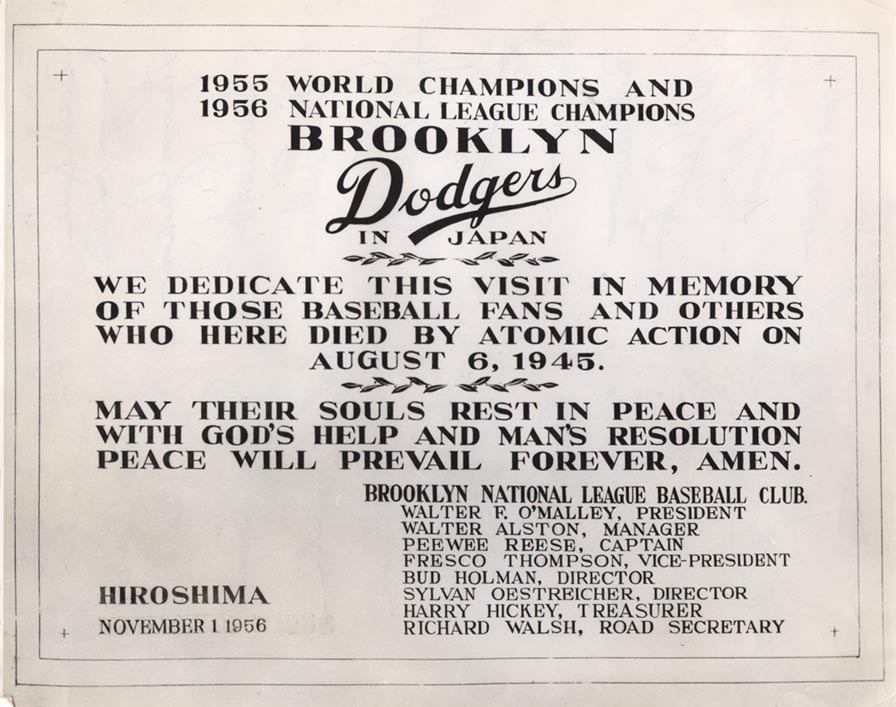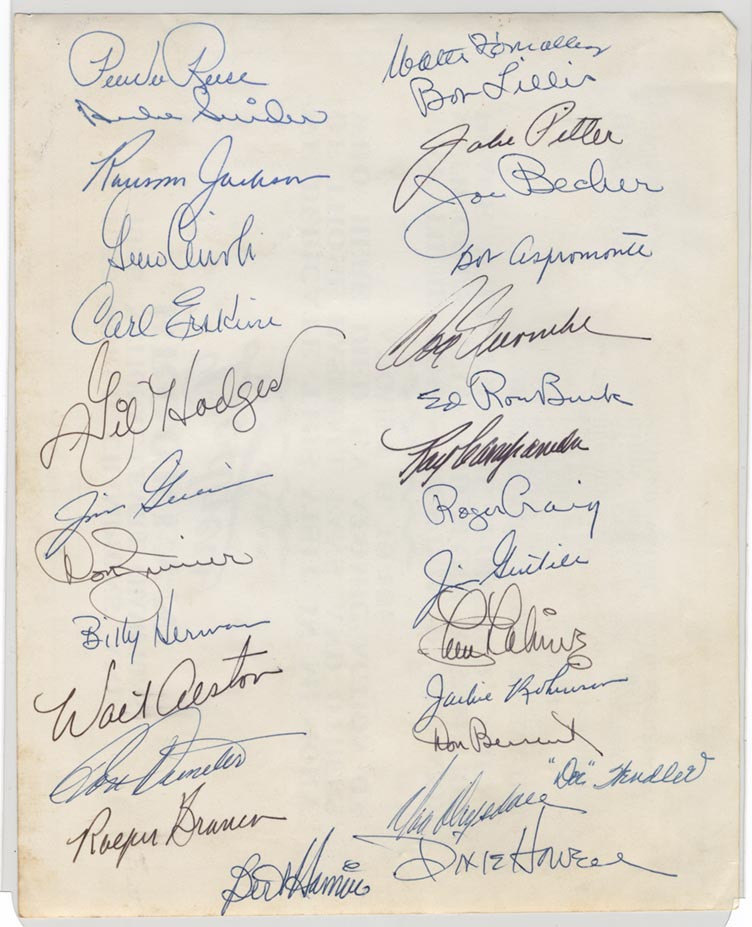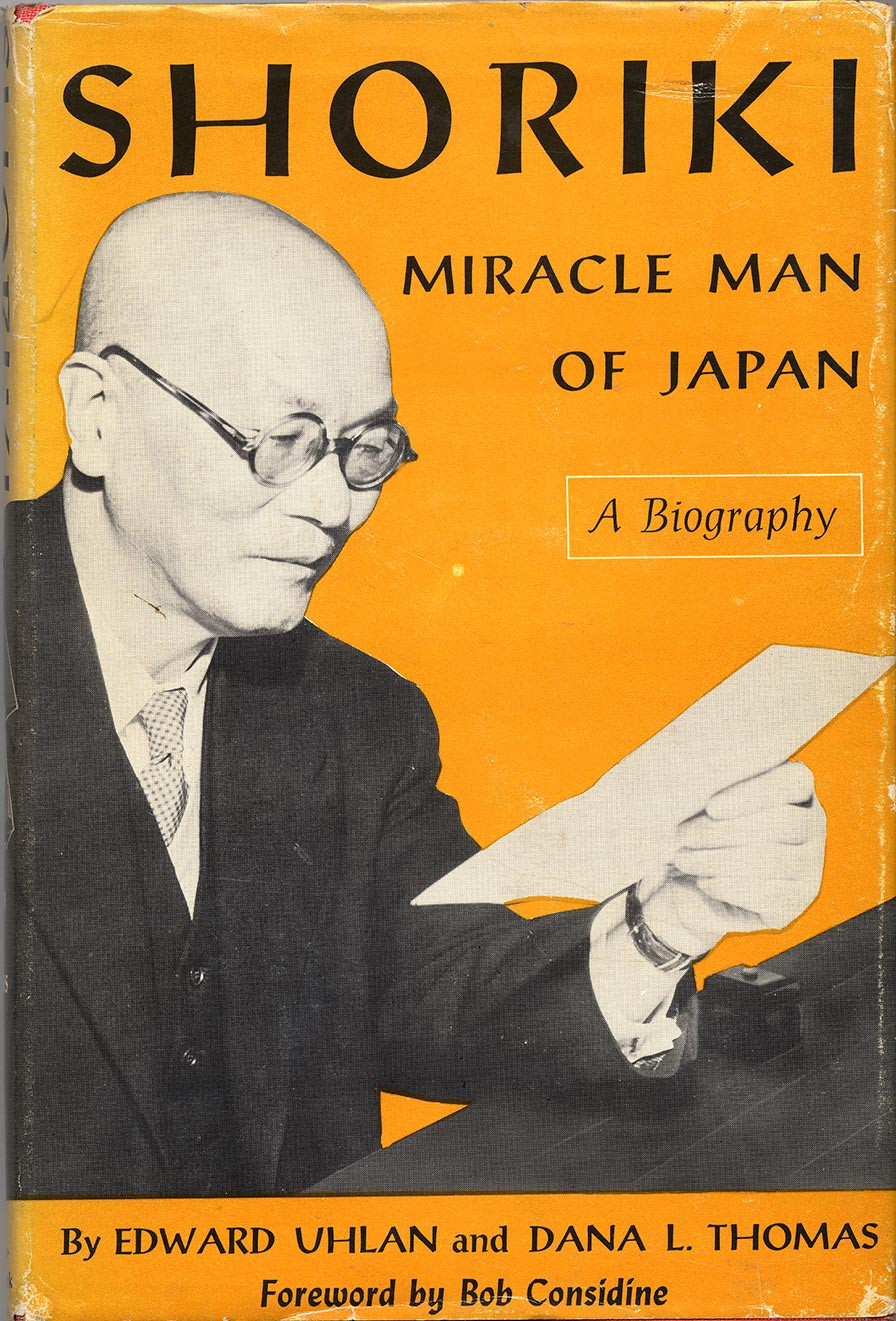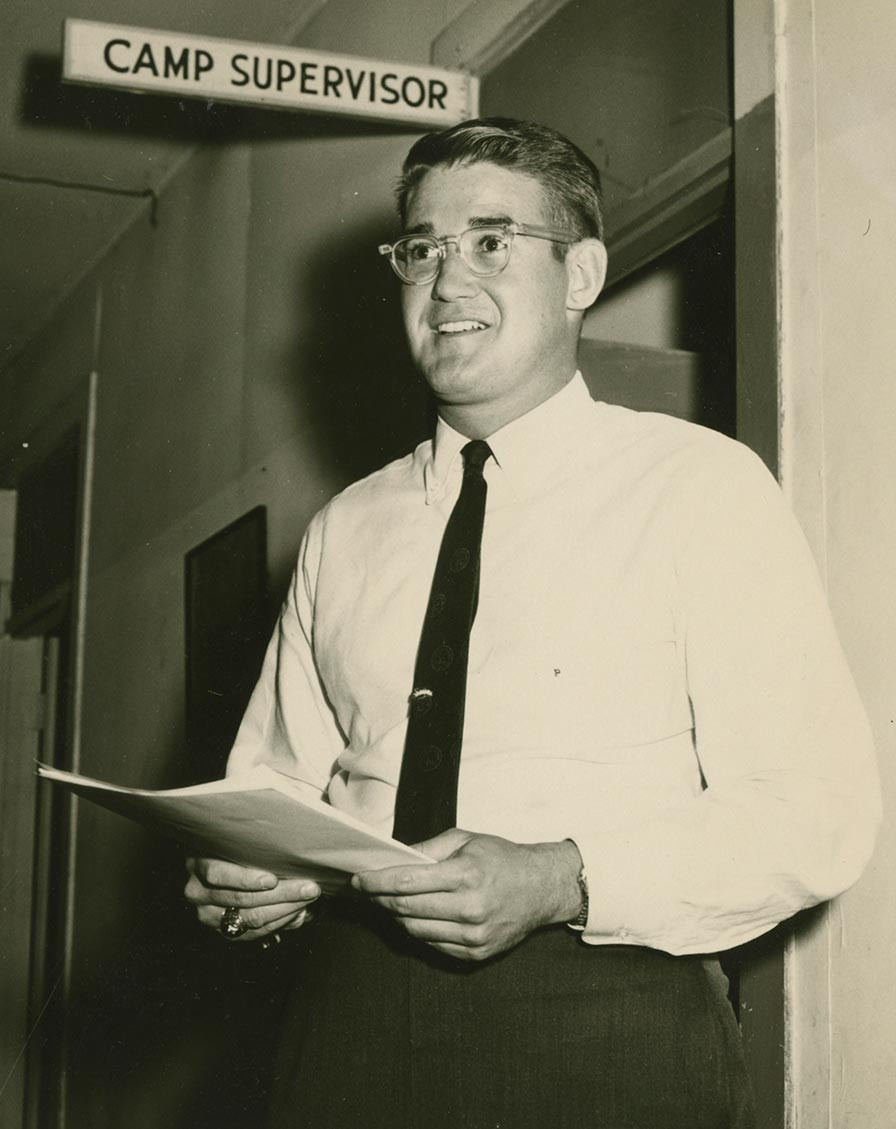This Day in Walter O’Malley History:
-
Along with Dodger President Branch Rickey and Long Island insurance executive Andrew J. Schmitz, Walter O’Malley purchases 25 percent of the shares of Dodger stock from the estate of former part-owner Ed McKeever. When Dodger President Charles Ebbets was in the process of building Ebbets Field, which opened in 1913, funds were running thin, so instead of paying cash to the contractors — headed by brothers Ed and Stephen McKeever — he offered them 50 percent of the shares of Brooklyn Dodger stock. Joe Trimble, Daily News, November 2, 1944 After Ed McKeever’s death, just 11 days following the passing of Ebbets, the shares went into a family trust. O’Malley said on November 1, 1944, “It has been known for some time that the Ed McKeever block was for sale to anybody acceptable, and we just thought it was a good idea to pick it up now.” The New York Times, November 2, 1944
-
Walter O’Malley writes in his appointment book “West Point — All Day.” The Brooklyn Dodgers did take part in “Spring Training” at the United States Military Academy in West Point, New York during the war years.
-
Roscoe McGowen of The New York Times reports that Walter O’Malley, a member of Baseball’s Executive Council, favors the major leagues extending the intra-league trading deadline to July 31, from the present date of June 15. “I think it would be a good thing for baseball to extend the trading deadline. In my opinion, clubs that now are pretty much compelled to settle for a second division berth on June 15 could, under the new deadline, be in a position to make helpful deals for another six weeks. They wouldn’t have to tell their fans to ‘wait until next year.’ When you bring up the point that a lot of players would feel unsettled because they would have to consider for six more weeks the possibility of being traded to another club, I’d like to say that I think that would be good, rather than bad.” Roscoe McGowen, The New York Times, November 1, 1952
-
Walter O’Malley lends support to the idea of two 12-team major leagues, which in turn, would be divided into Eastern and Western sub-groups and have playoffs prior to a World Series. The plan was proposed by International League President Frank Shaughnessy. “It isn’t something that is going to be in a couple of weeks or maybe a couple of years,” said O’Malley, “but eventually something will have to be done and to me the Shaughnessy plan looks sound. Congressional pressure, as well as pressure from other sources, makes it clear that the time when the present major league barriers must be broken down is not far off. A change is imperative, a definite must, but I do not believe the formation of a third major league would solve the problem. To do that would mean a setting up of a new league, which obviously would include numerous weak cities and I doubt whether National and American League set-ups would care to move into any such new circuit.” John Drebinger, The New York Times, November 1, 1953 O’Malley specifically mentioned “Montreal, Toronto, Los Angeles and San Francisco” as strong expansion possibilities (from the existing 10-team leagues), with such locales as “Houston in the Southwest and Kansas City in the Middle West also offering logical sites.” John Drebinger, The New York Times, November 1, 1953 In 1932, Shaughnessy devised a playoff system in the minor leagues which immediately gained popularity, as it pitted the first four clubs at the end of the season into a playoff series to determine the eventual champion, thereby keeping interest in those clubs that would have been out of the race earlier.
-
Brooklyn Borough President John Cashmore begins a $100,000 survey to consider a new stadium and a proposed rehabilitation of 500 acres of land at the intersection of Flatbush and Atlantic Avenues. The engineering firm of Clarke and Rapuano is to supervise the survey of the land, ultimately to make a determination on its possible use for a multi-purpose dome stadium to house not only the Dodgers, but other sporting events and attractions year-round. According to The New York Times article, “Mr. Cashmore said the center of the area at Atlantic, Fourth and Flatbush Avenues was the worst traffic bottleneck in the entire city. He said there was also need for additional parking space because of the type of business in the area.” Walter O’Malley was pleased that the new stadium for the Dodgers was under consideration as part of the survey, stating, “With Mayor (Robert) Wagner, Commissioner (Robert) Moses and Borough President Cashmore working together as a team, I am sure that significant results can be expected for Brooklyn. I hope for prompt action on the study.” The New York Times, November 2, 1955
-
In one of the most memorable moments of the Brooklyn Dodgers’ 1956 Goodwill Tour to Japan, the ballclub travels to Hiroshima and dedicates the game to the memory of baseball fans and others who died in the atomic bombing of that city. The Dodgers visit a memorial and dedicate a plaque at the entrance to the new Hiroshima Stadium. The inscription reads, “We dedicate this visit in memory of those baseball fans and others who here died by atomic action on Aug. 6, 1945. May their souls rest in peace and with God’s help and man’s resolution peace will prevail forever, amen.” The plaque bore the names of Walter O’Malley, Dodger President; Walter Alston, Dodger Manager; Pee Wee Reese, Dodger team captain; and other club officials.
-
In his letter to Matsutaro Shoriki, retiring owner of the Yomiuri Giants and the “father of professional baseball in Japan,” Walter O’Malley writes, “We have read many stories about you and your career and now a new chapter has been written. Last year you were disappointed in the finish of your Yomiuri Giants. You asked the Dodgers to invite them to Dodgertown, Vero Beach, Fla., for spring training. You spared no expense because you wanted to win the World Championship more than anything. Your judgment has been vindicated and we congratulate you on being a dedicated baseball man, the Father of Baseball in Japan. It has been a pleasure and an honor to know you and to have had the privilege of working with you.”
-
Walter O’Malley sends a letter to writer Joe Williams of New York World-Telegram & Sun. “I do not know how smart it is for you to continue on the Bob Moses binge but I must confess that I like it. Of course, I have long since known how phony the politicians really are. Maybe some day you should do a definitive story on the exodus. I see that Art Daley (of The New York Times) still has us receiving a handout from the City of Los Angeles. Not a word of truth to it as we will have $20,000,000 invested in Los Angeles and a little research might develop that to be a greater sum of money than all the people in baseball in all of its years ever contributed to the game. And you know, selfishly I hope it works out. This might be a very old fashioned American sentiment. It seems more popular today to be a Socialist and want the public to spend its tax money for your facilities. After all, it has been a long time since 1923 when the last baseball stadium to be built with private money was called Yankee Stadium. Since that time, and you can tick them all off, stadiums have been built on public tax exempt land with public funds.”
-
Peter O’Malley, the 23-year-old son of Kay and Walter O’Malley, is named Director of Dodgertown, the club’s Spring Training headquarters in Vero Beach, Florida, becoming the fifth camp supervisor since 1948. O’Malley succeeds Lawrence (Chick) Walmsley, who will serve as business manager of Dodgertown.
-
The Tokyo Yomiuri Giants won the baseball championship of Japan and sent a cablegram to thank Dodger President Walter O’Malley. The Giants had trained as a team at the Dodgers’ spring training base in Vero Beach, Florida before the 1961 season. The cablegram from the Giants owner, Matsutaro Shoriki, read, “Thanks to you, Yomiyuri Giants captured Japan world series, bringing into full play what they learned at Dodgertown. Regards to all. The New York Times, November 2, 1961
-
Walter O’Malley writes a letter to sportswriter Harold Rosenthal of the New York Herald-Tribune stating, “In this morning’s mail I received a copy of The American Diamond with the following written inscription: ‘Dear Walter — You continue to succeed and you deserve distinction in Baseball. My sincere best wishes go out to you. You will forgive the imperfections of this book. (signed) Branch Rickey.’ We have also ordered a copy. I will go over it shortly but by thumbing through it I have been somewhat impressed.”


